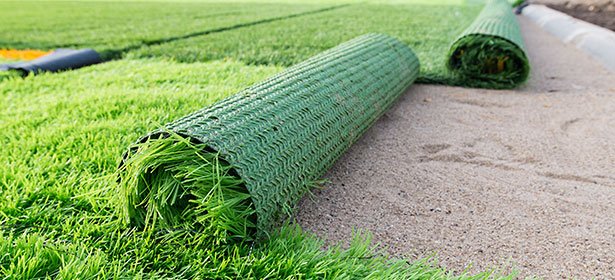Choosing the best artificial turf for your home or business can be overwhelming with all the different brands, prices, and features available. Consult an expert in artificial turf grass supply to help you get top-quality synthetic grass for your needs. Here’s a guide to choosing the best synthetic turf for your space:
Table of Contents
Know Your Needs
Before choosing your artificial lawn, know the purpose. Decide if you’ll put your turf in the shade or sun and if your pets will play on it. Find out if the place you intend to put your artificial grass gets a lot of standing water or high foot traffic.
Different types of artificial lawns are suitable for various uses depending on their strengths and weaknesses. Here are some types of usage for an artificial lawn:
- Family lawn/play area: ideal for places that are mostly used for recreation and have heavy foot traffic
- Ornamental lawn: suitable for improving aesthetic appeal for low-trafficked spaces
- Pet-friendly lawn: ideal for areas where pets play and run around and is designed to withstand heavy traffic, urine, and excrement
- Lawn for garden parties and entertainment: suitable for spaces that are susceptible to stains and spillages and are periodically heavily trafficked
Each of these uses requires artificial grasses with different qualities. When choosing artificial turf to suit your needs, the following are features to consider:
Density
Density refers to the number of blades stitched per square inch of turf — the more blades, the higher the density. Your turf’s density can affect its durability and resilience. Artificial lawns with higher density counts can be more resilient and last longer, making them suitable for high-use areas. These lawns can look fuller and lush, giving your space an even and realistic appearance. Low-density turfs can be less strong and durable and may make your lawn look a bit sparse and thin when in high-traffic areas. They can be an excellent choice for low-trafficked spaces, however.
Height
Height refers to the length of the blades of the artificial turf — the distance between the tip of the blades and the backing. The height of your turf can greatly impact its aesthetics, touch, and resistance to traffic. If your turf has longer blades, it may have lesser resilience. Such turfs may have a better touch and look more natural initially, but with time the blades can bend over, giving your space a flat look. To make the blades stand upright again, you may be required to spend time and energy sweeping your turf.
Shorter blades can be suitable for high-traffic areas such as sports fields since they can be less susceptible to flattening when people walk or play on them. They can be hard-wearing and easy to clean and maintain, making them ideal if you have pets or kids. Turfs with shorter blades can give your lawn a neat finish with a fresh-cut appearance.
For a fuller and more natural-looking lawn, consider blades with a height between 30-38mm.
Color
Synthetic grass can come in different colors since natural grass often has many shades of green. Before choosing the ideal color, look closely at the free turf samples that manufacturers may offer. Don’t over-rely on the internet pictures to decide since the colors can look different on a screen versus in real life.
You can place the samples in the space you want to install the artificial grass to view their appearance. Different lighting conditions can make your turf color look different. Some turfs may appear darker indoors due to low lighting levels. Consider light-colored grass to brighten up your space if your yard receives little sunlight or is covered.
If you want to buy synthetic turf that resembles your current lawn, place the samples close to your current lawn and compare their colors. Choose turf with multiple shades ranging from light to dark green to achieve a lawn with a more natural look — real grass is usually not completely green.
Yarn
Synthetic grasses can be made using various yarns, including nylon (polyamide), polyethylene, and polypropylene. These yarns can come in various shapes, thicknesses, and colors to mimic different natural grass species.
Polyethylene is commonly used as it’s considered a very good all-rounder — it can offer a balance between softness, durability, and aesthetics. Nylon can be hard-wearing, more resilient, and stronger than its two counterparts, which can make it a more durable and expensive option. Polypropylene can be used to add thatch to the artificial lawn. Nylon turfs can be a good fit for frequently-used spaces, while polyethylene and polypropylene ones can be suitable for low-traffic areas.
Choose a Reliable Artificial Turf Supply
Getting artificial turf for your home or business can enhance your space’s aesthetic appeal and reduce maintenance costs. Choose a reliable artificial turf supply company to offer the ideal grass for your needs and quality installation services.

